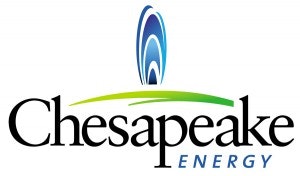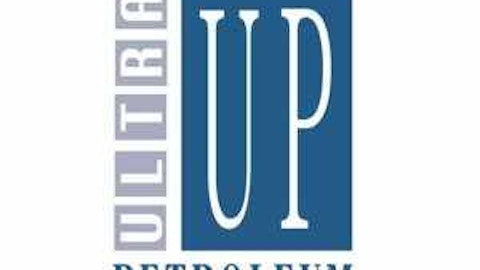The oil and gas business is one of the most profitable in the planet. Some major players offer specific services and products and, therefore, interesting investment prospects. In this article we will examine
A bet on the natural gas
Independent oil and gas company Chesapeake Energy Corporation (NYSE:CHK) offers the best natural gas assets in the market. Although this does not mean much by itself, comparing its values to the stock price of $19.29 reveals some interesting ratios. Chesapeake Energy Corporation (NYSE:CHK) currently trades at 0.8x P/B and 0.9888x P/S, both considerably below the respective 1.66x and 3.43x industry medians. Despite these figures have encouraged some analysts to recommend buying, most experts (Zacks, Barrons, Wall Street Journal, Morningstar) would advise holding this firm´s stock.

Those who suggest buying have focused on several positive points in the company. For starters, as natural gas prices are currently in a downtrend, important capital investments in rich liquid drillings should drive the firm´s future profits. Projections estimate a 7% drop in natural gas production during 2013, but also growth of approximately 27% in liquids production. In addition, several planned asset sales for $4-$7 billion will help reduce the firm’s long term debt and finance its ongoing operations, currently reporting deficits because of the low prices of natural gas.
Although dividend yield of 1.85% at a low stock price is quite alluring and the Sinopec joint venture provides opportunities for future production expansion, the fact is that most of Chesapeake Energy Corporation (NYSE:CHK)´s financials look pretty alarming:
– Negative operating margin of -13.8% is upon the worst in the segment.
– Below zero net margin of -6.2% also situates Chesapeake Energy Corporation (NYSE:CHK) amongst the poorest performing companies in the sector.
– Return on Equity of -4.9%, Return on Assets of -1.8% and Return on Capital of -5% puts the firm at the end of the segment´s line too.
– Gross margin shrank to 38.6% last quarter, less than half the value announced for year 2011. The past 10 years have registered an average gross margin decline of 3,5% each year.
– Despite the success of the asset monetization plan, the firm is still considerably leveraged, offering a poor 0.023 cash to debt ratio.
– Although the company´s aggressive business model has helped them control almost every major unconventional energy play in the U.S., their trend to outspend the existing cash flow has worried many investors.
A Stock With A Long Term Prospect
With almost 100 years of experience in the energy infrastructure and transportation sector, Williams Companies, Inc. (NYSE:WMB) is placed in an advantaged position to connect natural gas and natural gas liquid (NGL) sources to areas of increasing demand. Given this condition, the firm offers one of the best long-term growth prospects within the segment. However, opinions are divided. While Zacks and Morningstar analysts recommend holding, most of Barrons and Wall Street Journal experts advise to Buy.
In line with Barrons and the WSJ, Ken Fisher just recently acquired Williams Companies, Inc. (NYSE:WMB) stock and has already perceived an increase of around 9% in his share’s price. Reasons to follow this investment guru are several:
-The infrastructure: Williams family, composed by Williams Companies, Inc. (NYSE:WMB), Williams Partners L.P. (NYSE:WPZ) and Access Midstream Partners LP (NYSE:ACMP), possesses both a well-established infrastructure and the resources to face further expansion and face the growing energy demand in the U.S.
The firm operates in over 20 U.S. States and in Canada, and its integrated infrastructure assets include the U.S.’ biggest natural gas distribution structure, Transco; the Marcellus/Utica extraction and processing complex with approximately 5 million dedicated acres; and Geismar, a 1.3b lb/yr olefins facility with increasing capacity.
In addition, the company has announced several organic growth projects which imply the investment of over $15 billion, which will be executed by a highly experienced and reliable management team, top in their sector. Credit Suisse calculations indicate that their diversified investment portfolio should generate a 17.4% CAGR in Dividends per share by the end of 2017.
–Operating margin of 21.5% is close to the firm’s historic maximum of 23.5% and ranks higher than 81% of the 43 companies in the Global Oil & Gas Integrated Industry.
– Net margin of 11.5% is at the highest point in the firm´s history.
– Return on Equity of 18.1% is close to its historic high and beats the 14.8% industry median.
In spite of these encouraging signs, some analyst prefer to hold on this stock, and several reasons back this decision as well.
– Revenue per share has been constantly declining for over two years now.
– Long-term debt has been issued over the past 3 years for a value of $3.1 billion. The cash to debt ratio of 0.078 is the worst in Williams Partners L.P. (NYSE:WPZ)´ history and interest coverage of 3.2 is quite low, overexposing the company to a drop in commodity prices.
– The domestic gas oversupply in the U.S., with enlarged reserves. This means that this gas-weighted should face a complicate situation in the short and medium term.
– Equity to asset ratio of 0.099 is the worst in the industry.
– Stock price at $38.38 is at its highest point in history. Trading at 27.4x P/E, several companies closer to the 11.3x P/E industry median, look more interesting.
A Good Target in Energy Transportation
Just like Williams Partners L.P. (NYSE:WPZ), Kinder Morgan Inc (NYSE:KMI) is engaged in the energy transportation business. Although Zacks recommends holding on the stock, they expect it to outperform within the next 6 months, reaching a target price of $47, up about 20% from the current cost.
During 2012´s fourth quarter, the company reported:
– Increased revenues of $3.079 billion, up 52% year over year.
– Informed net income of $220 million reported a 41% upsurge (YoY).
– Operating margin of 26% was up almost 40% (YoY), reaching the highest value in the firm´s history and outperforming 74% of the 43 Oil & Gas Midstream Companies in the U.S.
– The acquisition of El Paso Corporation provided an important boost to the firm´s financials and is expected to continue to drive profit growth, while making of Kinder Morgan Energy Partners LP (NYSE:KMP) the largest company in the midstream energy sector.
– Dividend Yield of 3.54% is close to its historic high of 3.99%.
Given these advantages, some analysts recommend buying (Morningstar), while others advocate holding (Zacks). This last position is encouraged by several negative issues in Kinder Morgan.
The main problem is financial as, in order to finance the recent El Paso acquisition, Kinder Morgan Energy Partners LP (NYSE:KMP) incurred in additional debt, maintaining leverage levels considerably high. Long-term debt reached $32 billion by the end of fiscal 2012, leaving behind a poor 1.9 interest coverage, quite below the 2.8 industry median. Also affected by the substantial liability, the Equity to Asset ratio of -0.16 is at its historical low and cash to debt relation of 0.021 is also below the segment´s median of 0.04.
Maybe responding to these bad signs, Chuck Royce recently decided to sell 20% of his Kinder Morgan Energy Partners LP (NYSE:KMP) shares at an average of $37.24. However, this seems to not have benefited him completely since the price is up by approximately 6% since he sold. Maybe holding on to this stock is a good idea; maybe even buying some could prove to outperform expectations.
Bottom line
With an impressive infrastructure and asset base and promising growth prospects at only 27.4x P/E, one of the lowest ratios in the firm´s history, Williams seems to be the wisest choice at the time. Although none of these companies provide an impeccable outlook, they are all worth looking from time to time.
The article 3 Big Players in the Oil & Gas Sector originally appeared on Fool.com and is written by Victor Selva.
Copyright © 1995 – 2013 The Motley Fool, LLC. All rights reserved. The Motley Fool has a disclosure policy.

